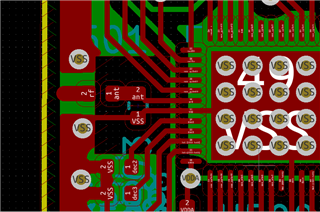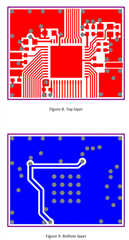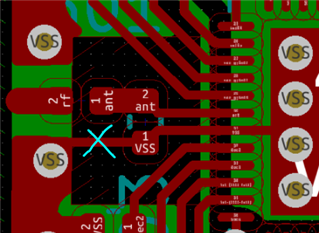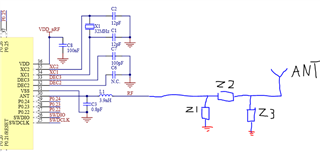Hello,
I'm wrapping up the layout of a board based on the NRF52832 (DCDC). I've tried to replicate the reference design as close as possible. I'm using Kicad and had to import the Eagle design, and wasn't sure on the fill/keep out areas close to the antenna which appears to be lost in the import process. I'm not a RF engineer and would appreciate some feedback if the layout of this portion looks acceptable, or if any changes are recommended.
Also we are planning to pot the electronics in epoxy into something about the size of a fist. The antenna will be sitting at the edge of this material. Will this require changing the RF tuning elements to get good performance? The product needs to achieve 75+ feet of communication. Thanks so much for the help! I can provide more information if that would be helpful.








